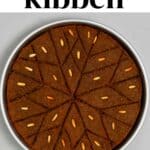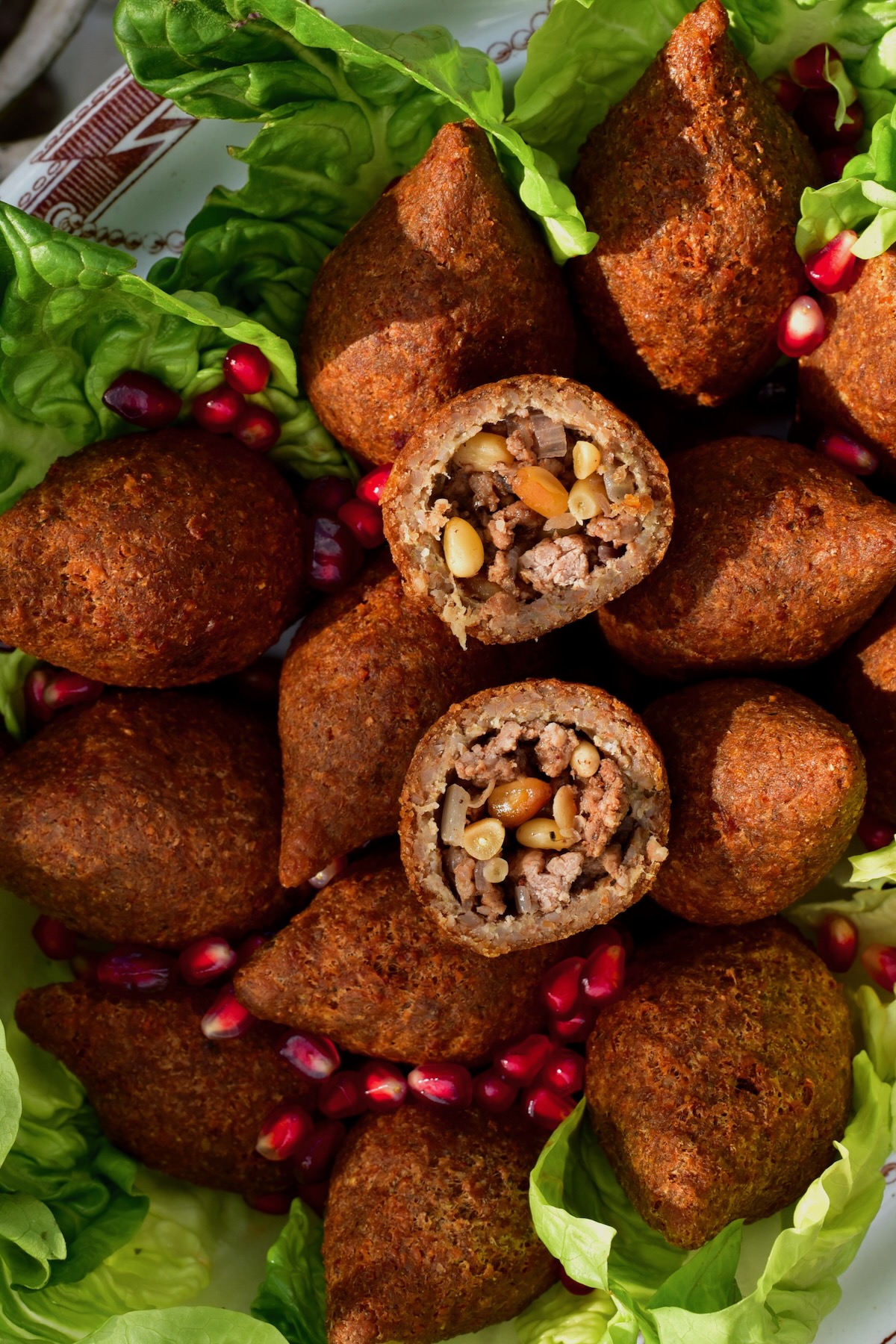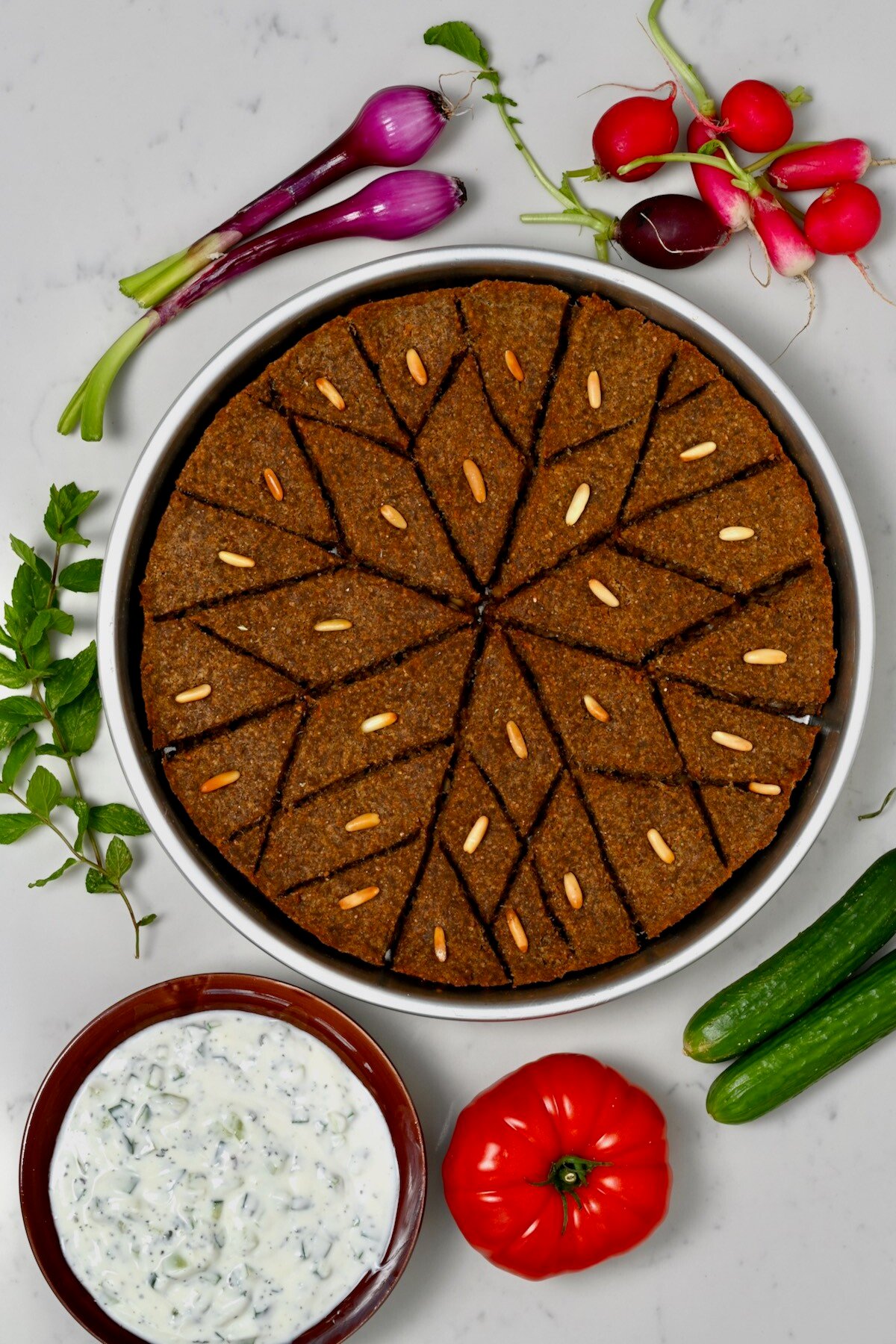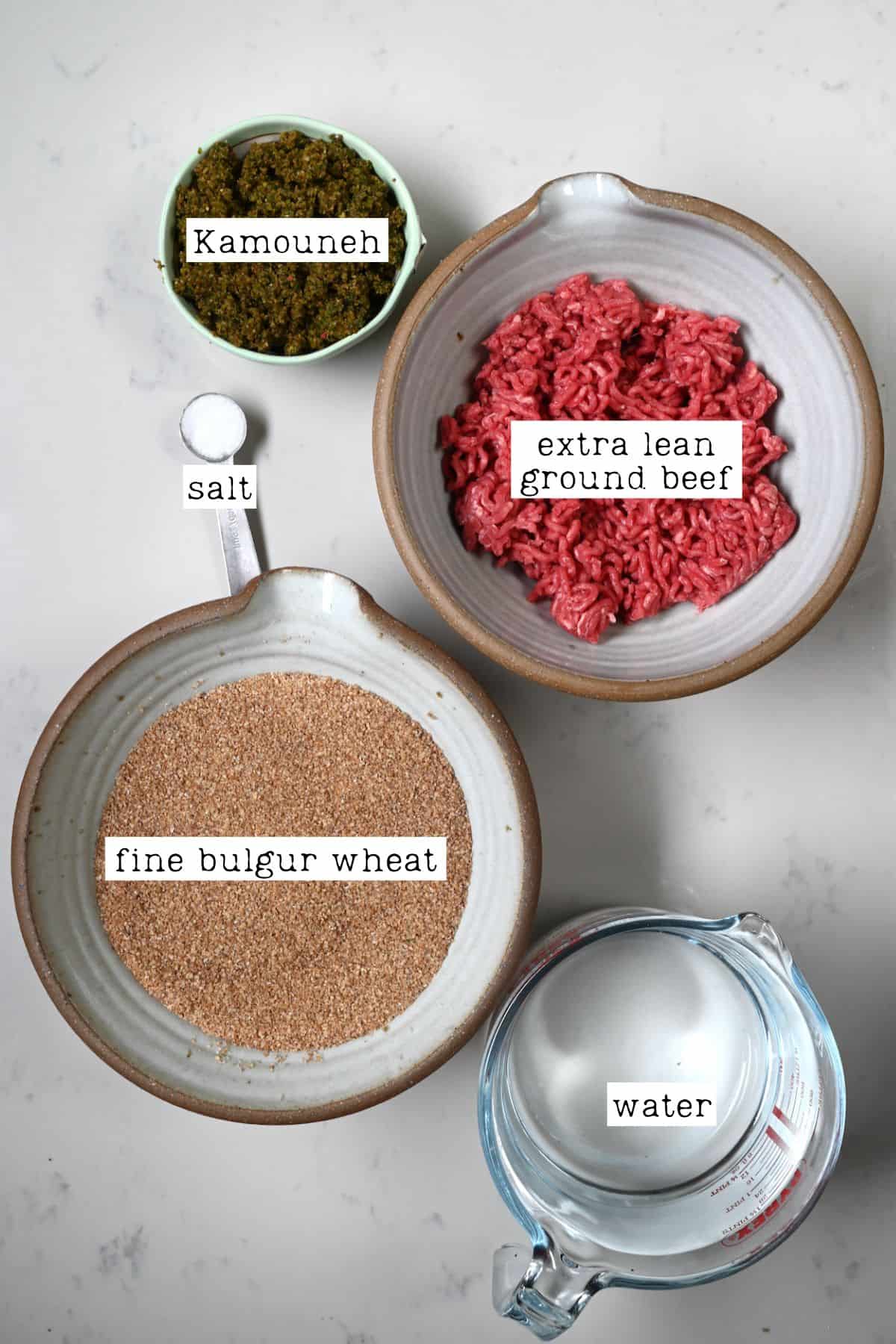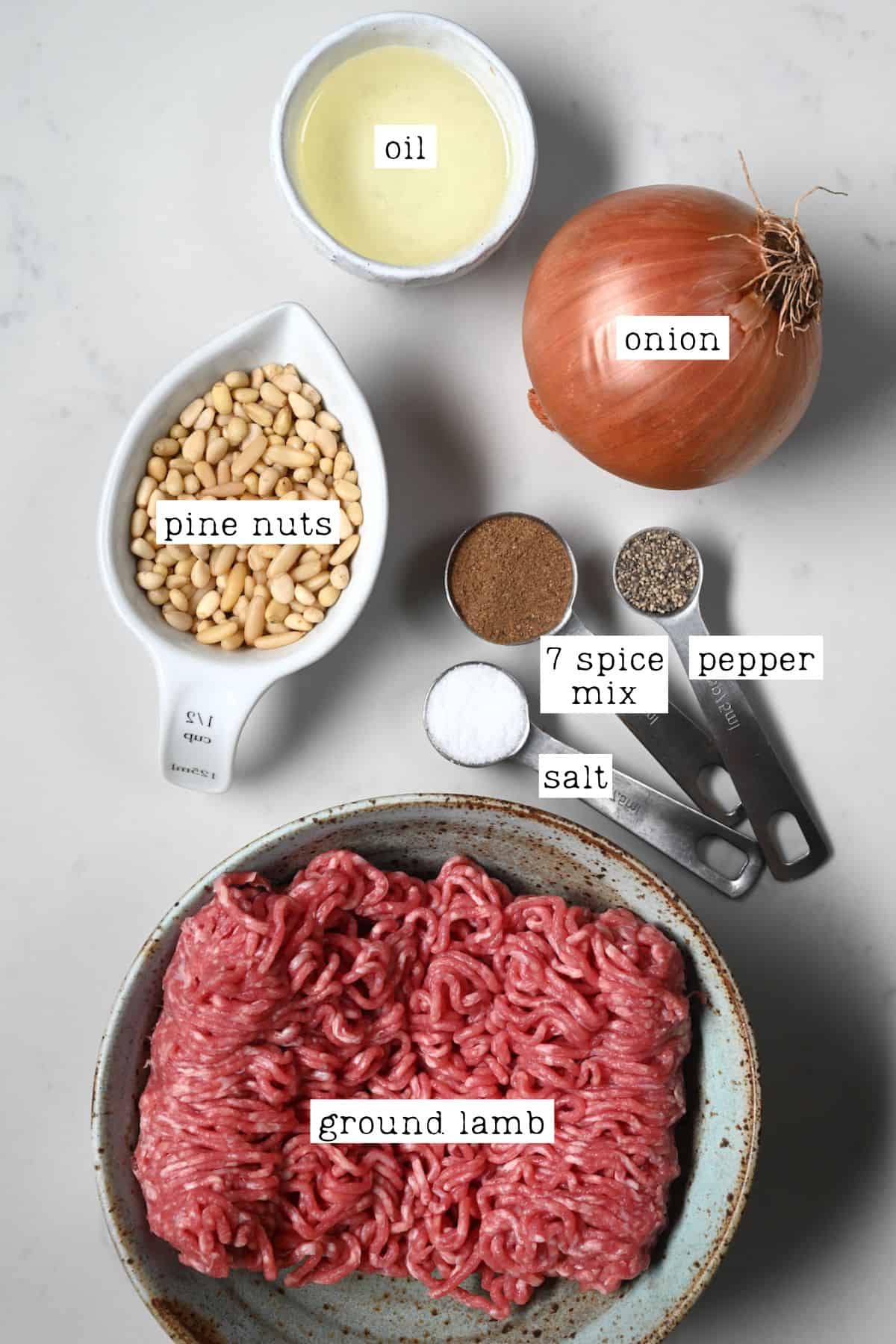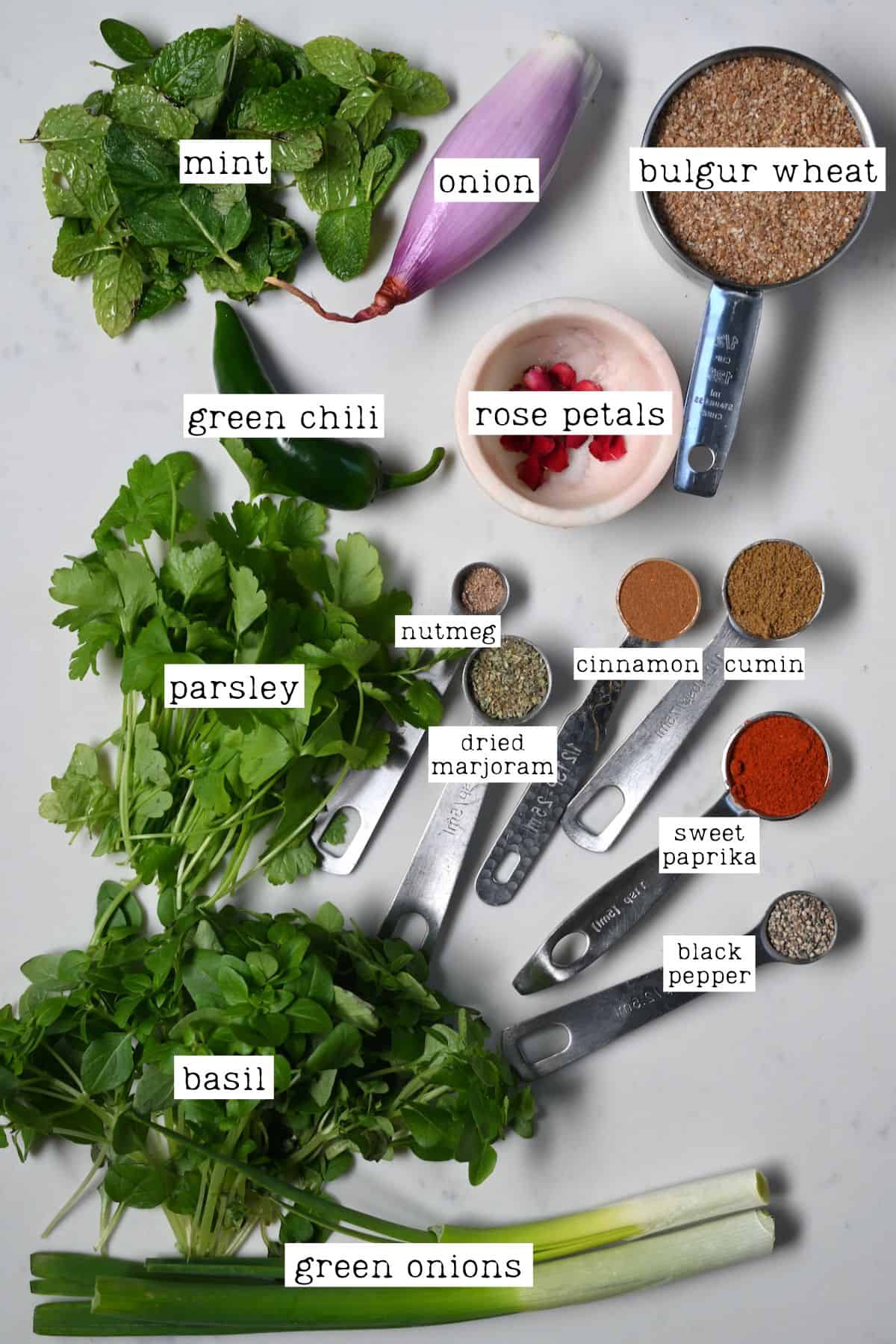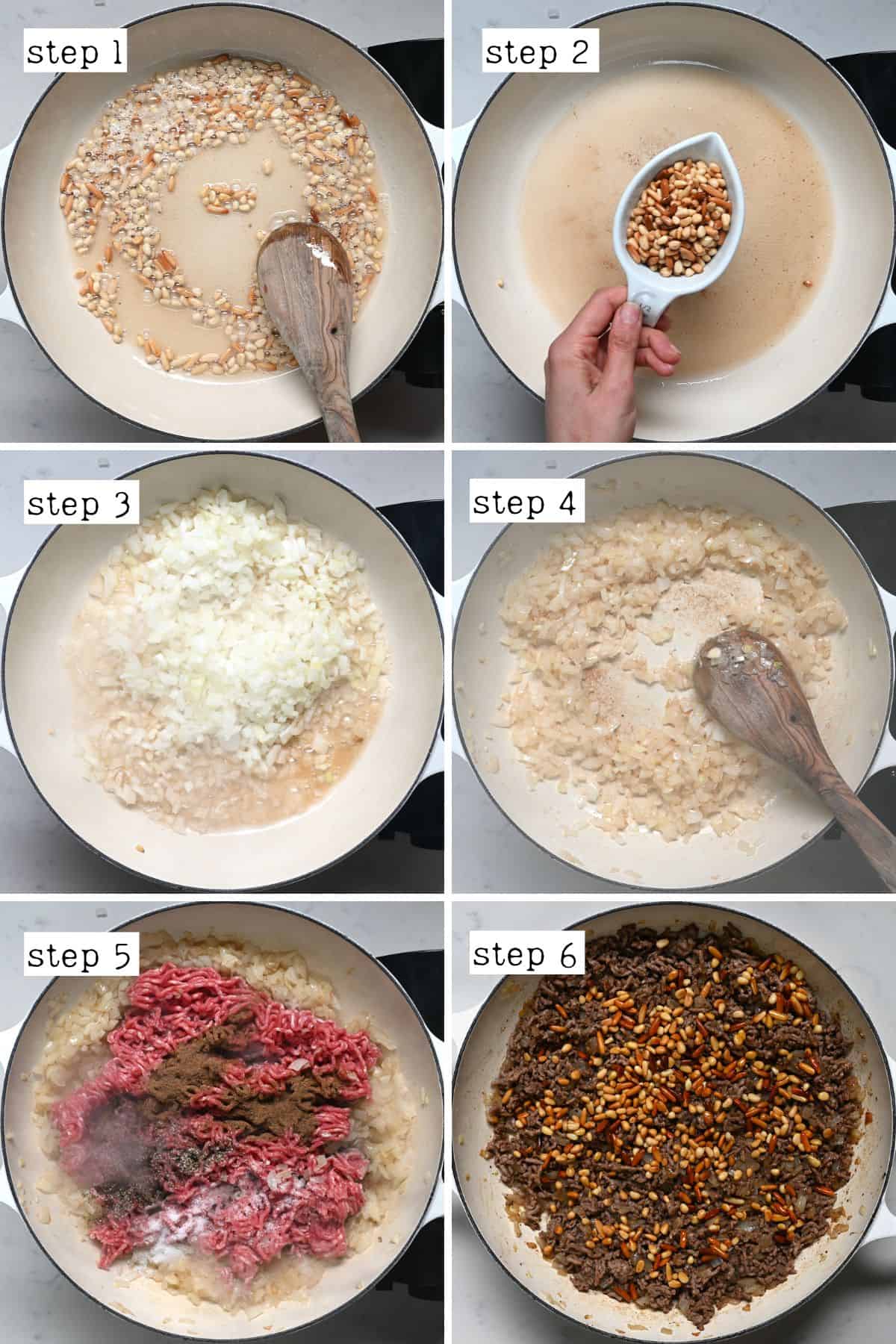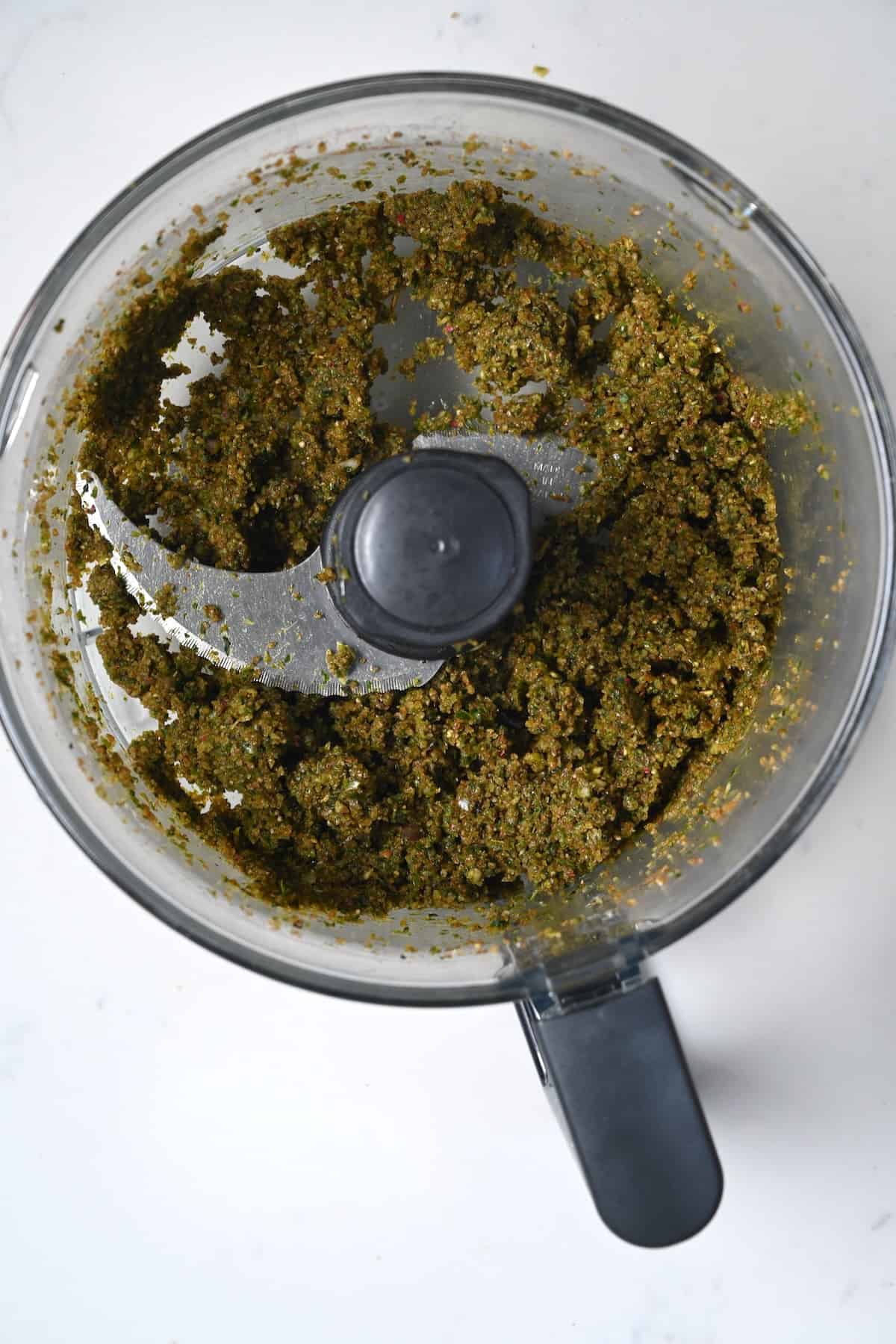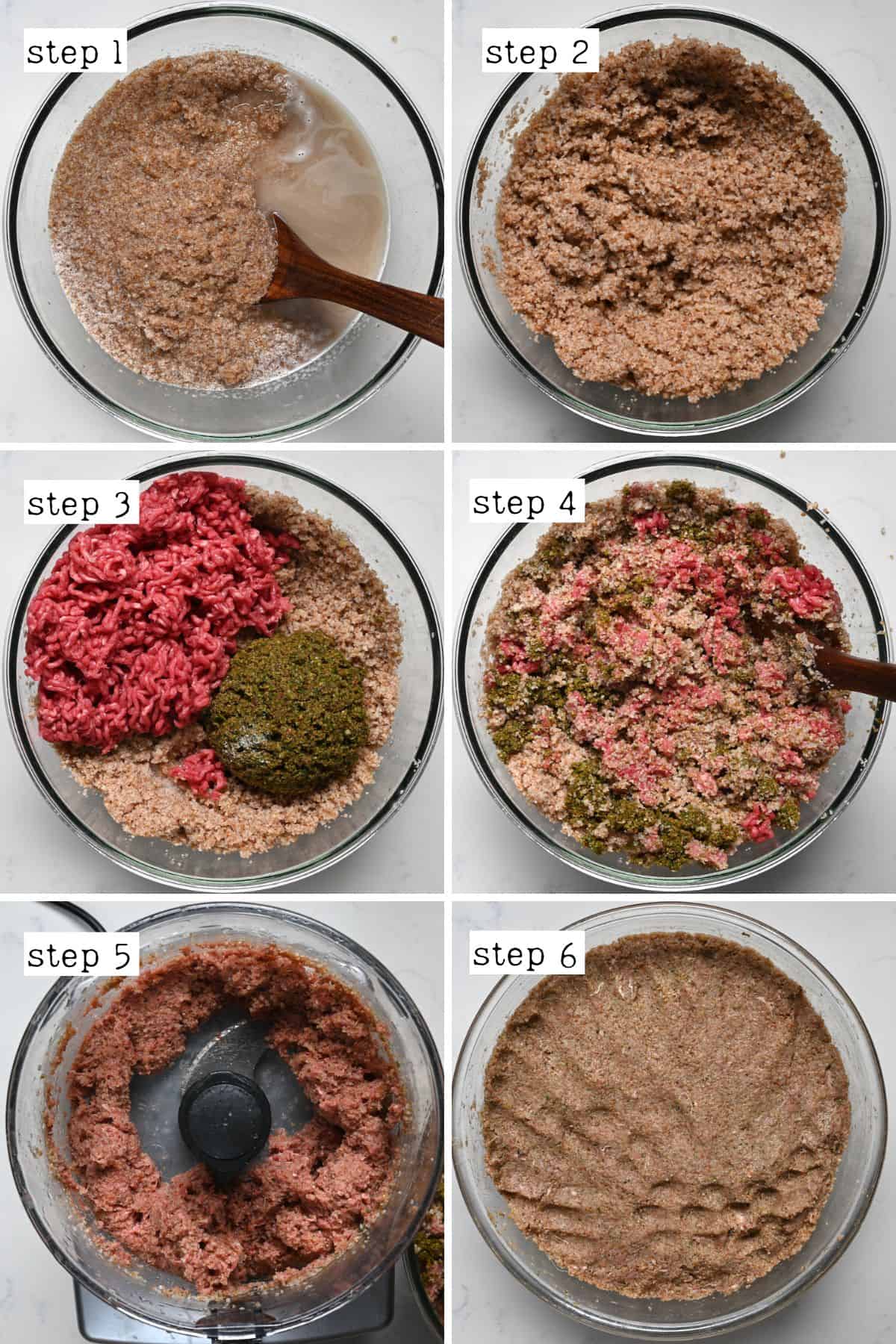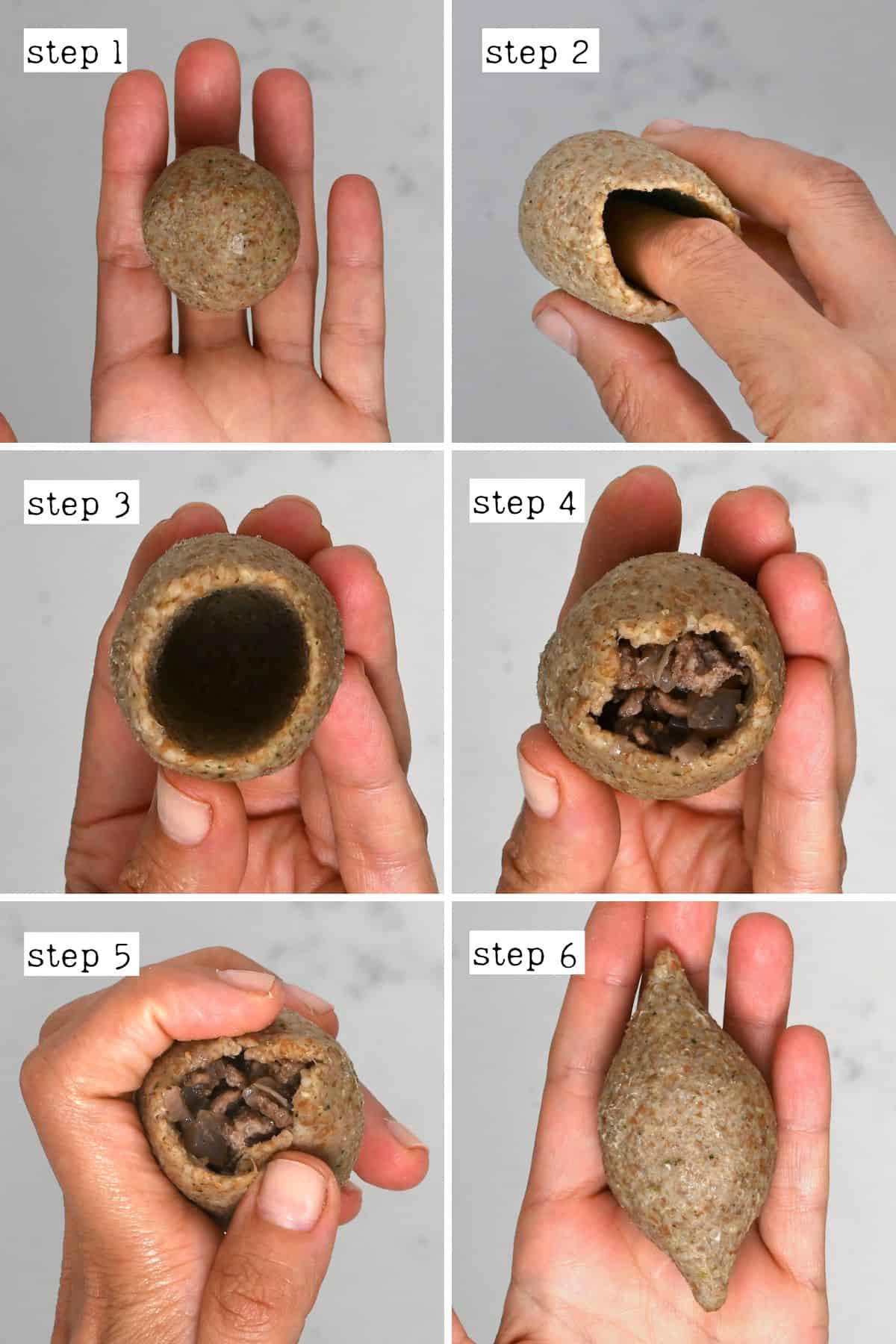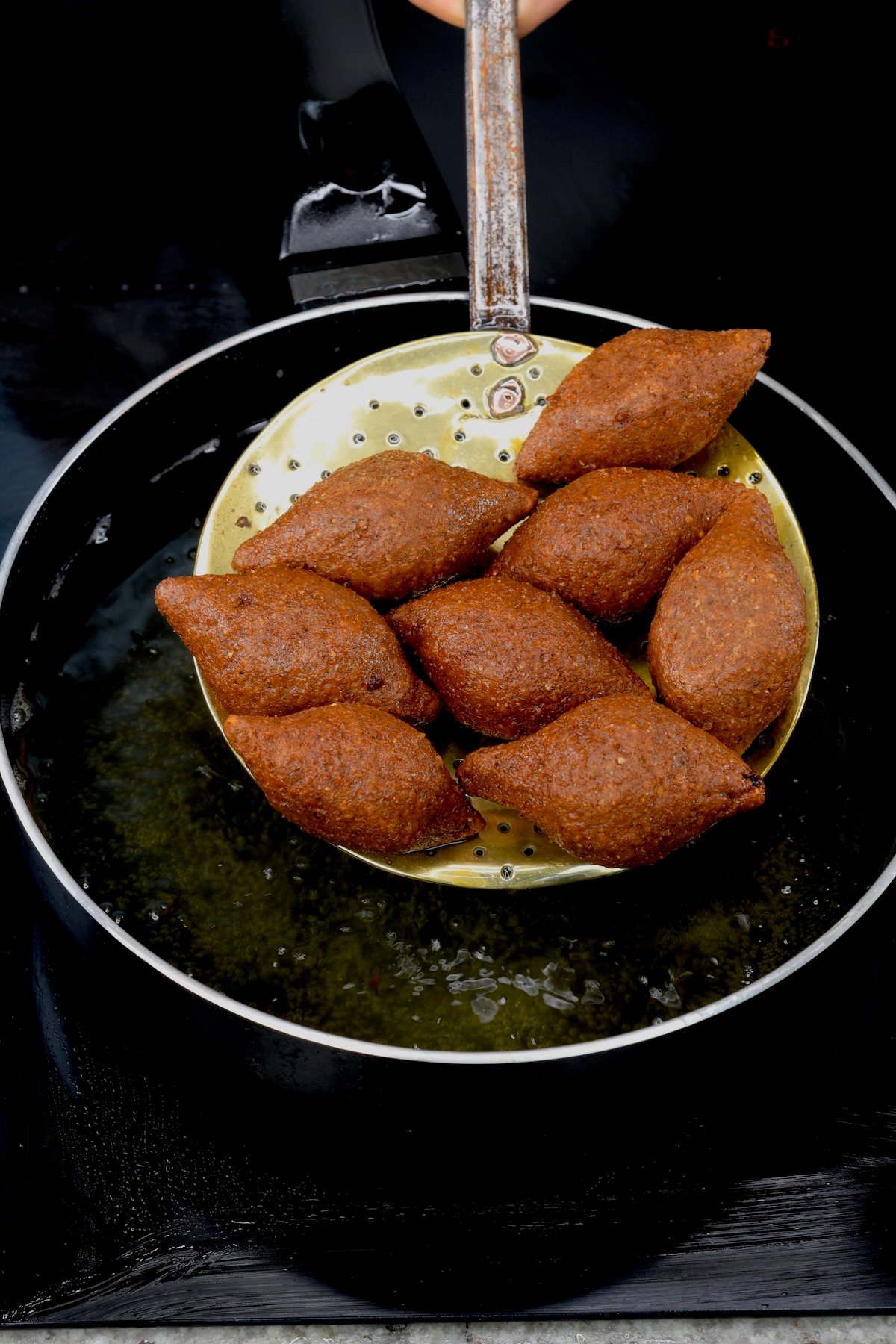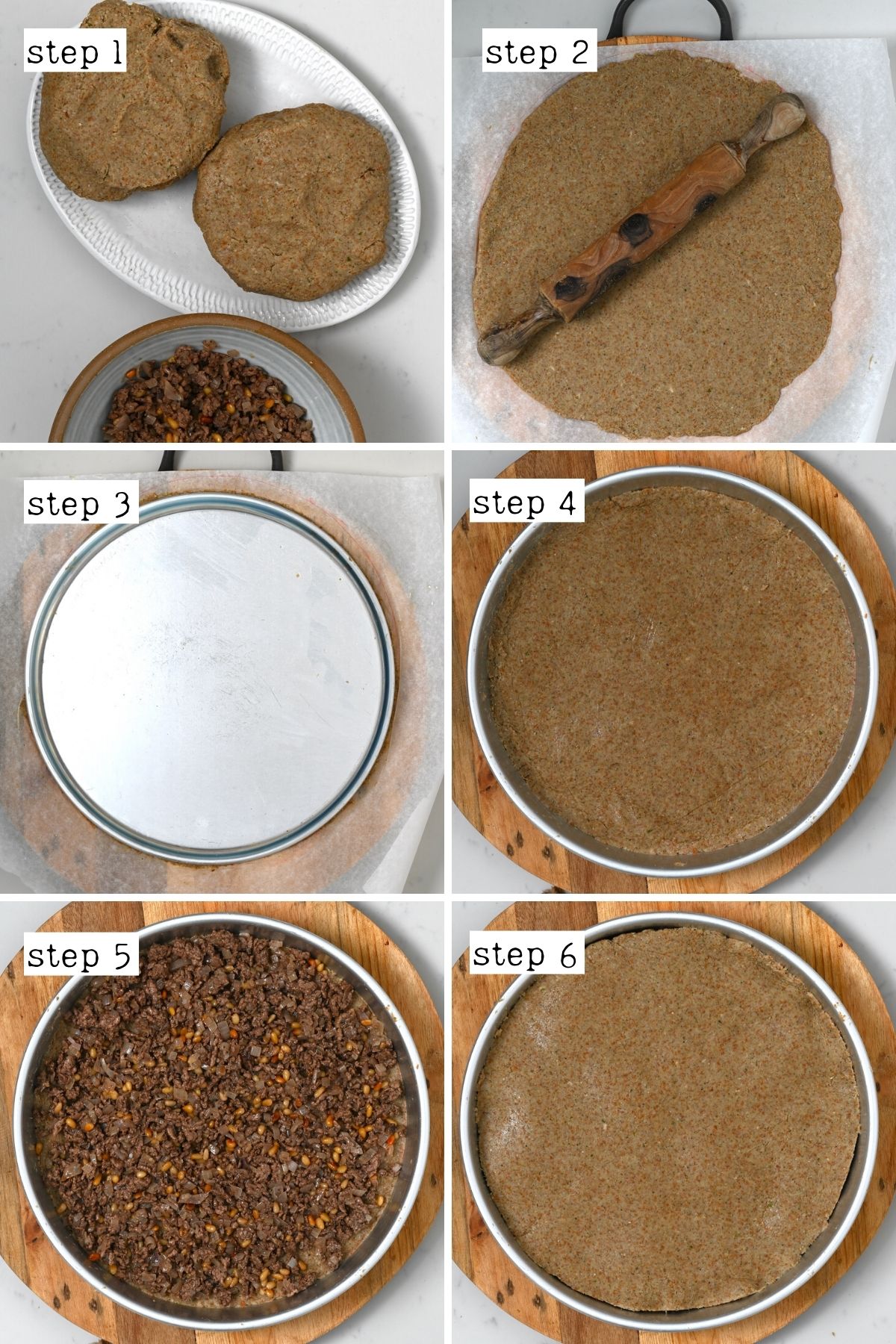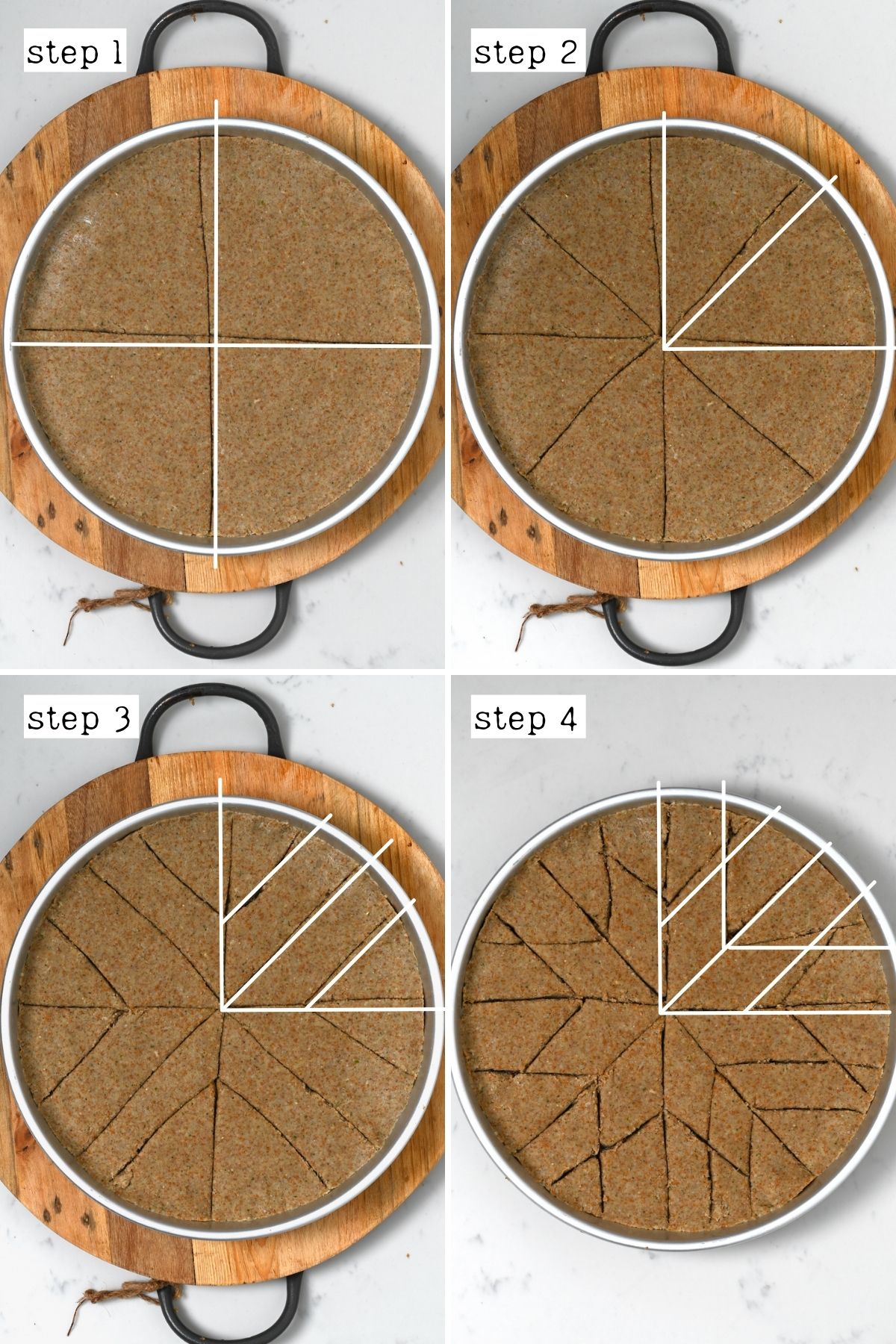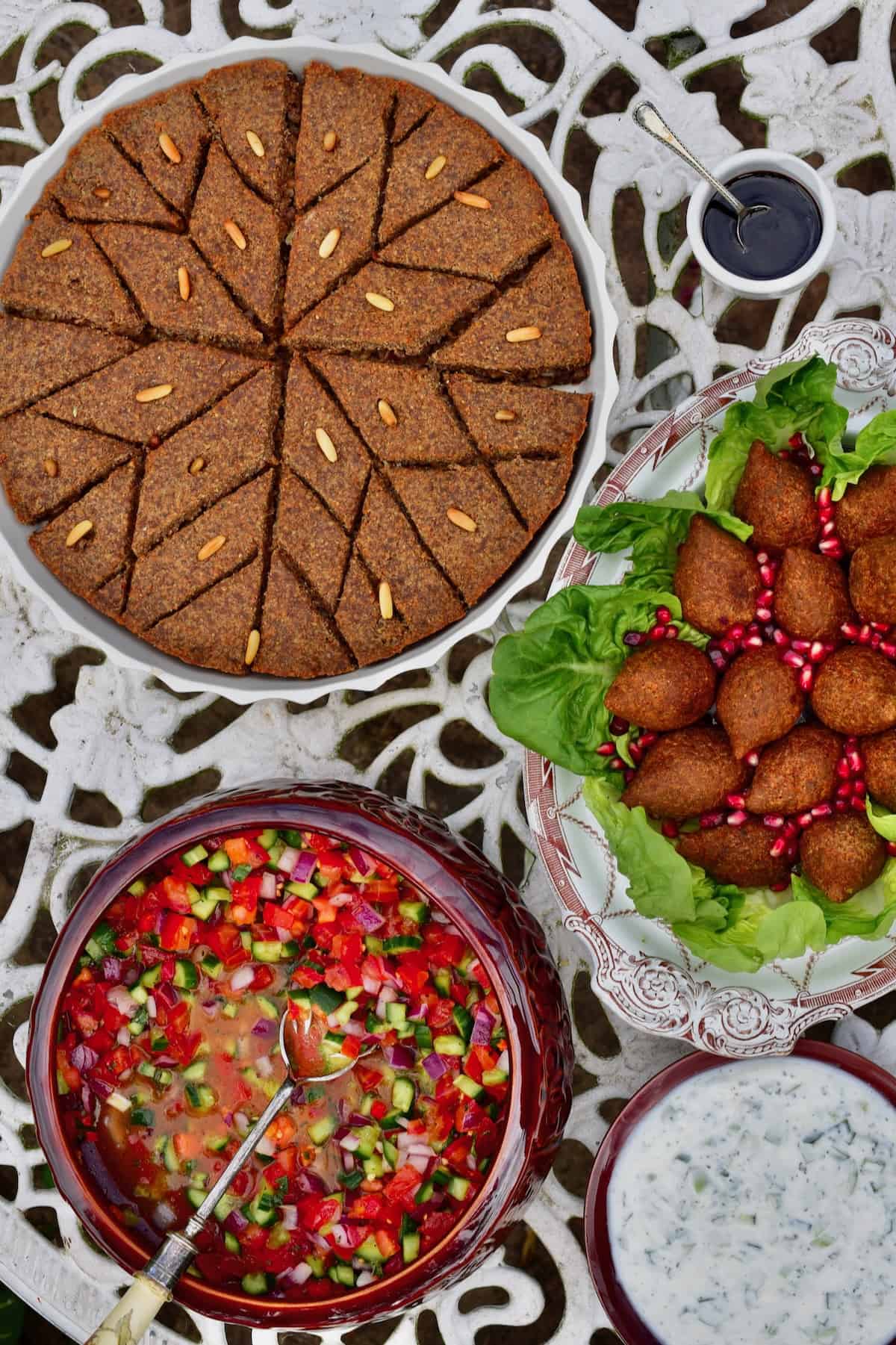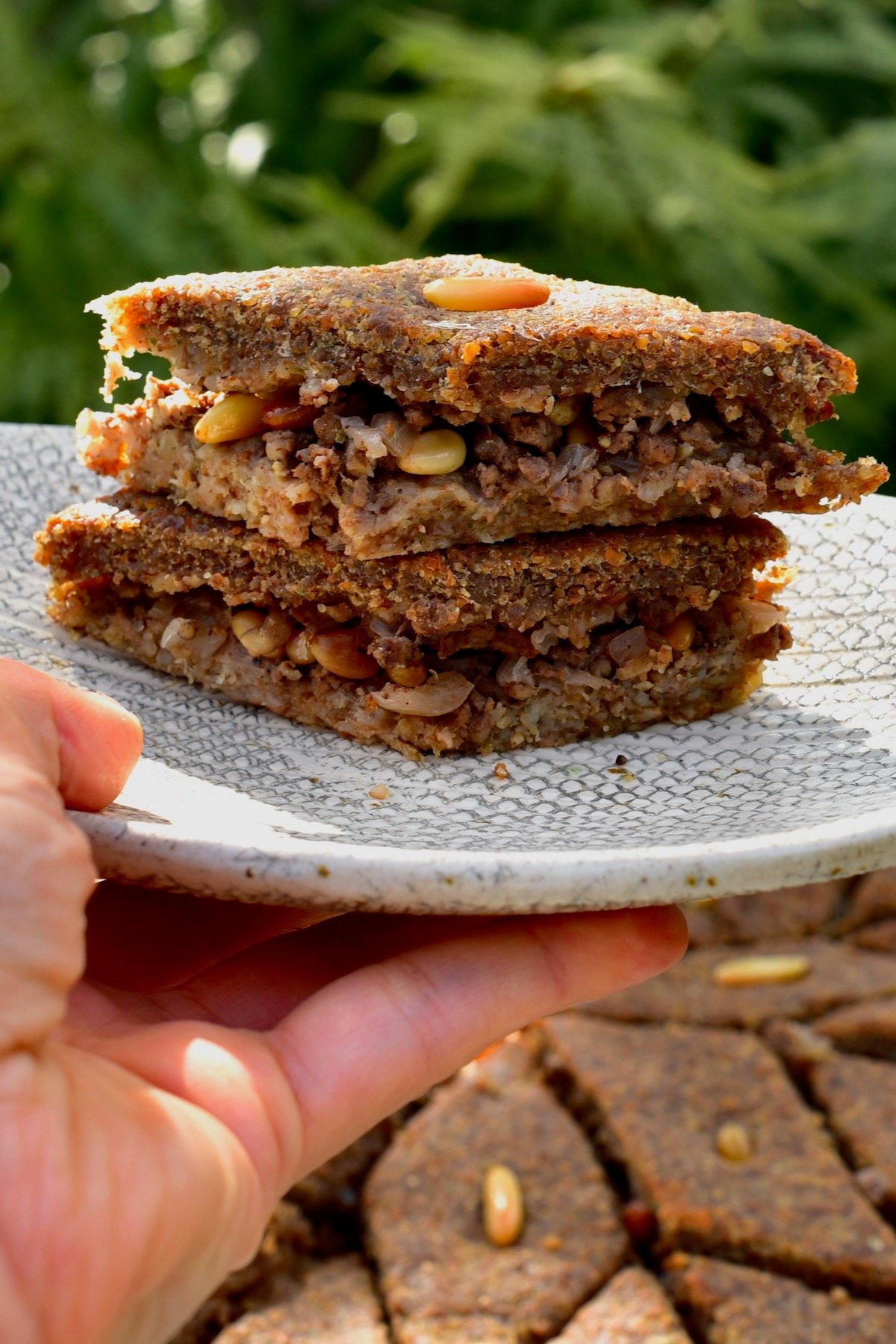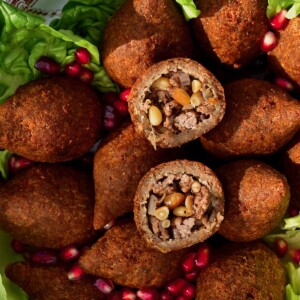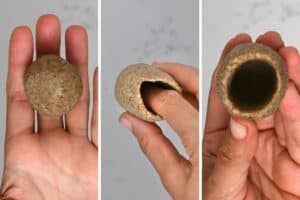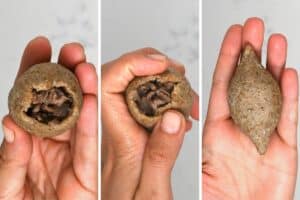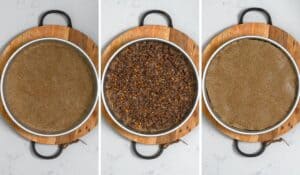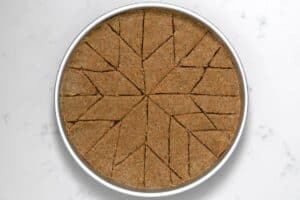Kibbeh is one of my favorite comfort foods from my childhood (along with sfiha and fatayer). I especially like the stuffed and baked versions! Kibbeh balls combine a soft, crispy meat shell with a super juicy meat filling. And the baked kibbeh sandwiches the filling between shell layers. Both of these taste amazing as an appetizer, side, or mezze with dips! If you’re a big fan of Lebanese cuisine, you can check out this and over 100+ other Lebanese recipes in my cookbook, Lebanese Cuisine: The Authentic Cookbook!
What is kibbeh?
Kibbeh (sometimes spelled kubba, kibba, kibbe, kibbi, kibbee, kebbeh, and içli köfte – meaning stuffed meatballs in Turkish) is named after the Arabic verb “to form into a ball”. It is a type of Middle Eastern meatball/croquette dish. It’s considered the national dish of Lebanon and Syria. Within this post, I’m making a fairly typical modern Lebanese kibbeh recipe in two ways:
The kibbeh ingredients
Kibbeh Dough
Ground beef: I used extra lean ground beef, around 90-95% lean, to make beef kibbeh. Though you could make beef and ground lamb mix if preferred (50/50 or 70/30). Bulgur wheat: Aka crushed wheat. Make sure to use fine bulgur wheat. Kamouneh: Aka green bulgur mix. Keep reading below for the ingredients. Salt: To season. I recommend using sea salt/kosher salt. Water: To soak the bulgur wheat for these Lebanese meatballs.
Kibbeh Filling (Hashwet al kibbeh)
Ground meat: You can use lean ground lamb (about 90-95% lean). Onion: Yellow onions work best, though white onions will also work. Pine nuts: These will be toasted for wonderful flavor and texture. Walnuts or pistachios will work in their place. Oil: Use a neutral oil, like canola oil. Seasonings: I use a combination of Lebanese 7 spices and salt and pepper.
Kamouneh
The ingredients list of this popular spice blend may seem long. But it’s made entirely of pantry-friendly or easy-to-find ingredients:
Herbs: You’ll need a combination of fresh mint leaves, basil leaves, and flat-leaf parsley leaves. Aromatics: I’ve used a combination of spring onion, white onion, and green chili pepper. Bulgur wheat: Use fine bulgar wheat. Kibbeh spices: I used a combination of sweet paprika, cumin, cinnamon, black pepper, dried marjoram, and nutmeg. And I added a few petals of dried roses. You can also buy this spice mix from Middle Eastern shops.
For fried kibbeh, you’ll also need neutral high-heat cooking oil, like canola oil or vegetable oil. For baking, olive oil or avocado oil will work.
How to make kibbeh
The fried and baked kibbeh recipes start with the same three steps: preparing the dough (casing), filling (stuffing), and kamouneh.
Cook the Filling
First, chop the onion and heat 2 Tbsp of oil in a large skillet over medium heat. Once hot, add the pine nuts and sauté until golden brown and aromatic (3-4 minutes). Transfer to a plate and set aside. Then, add the remaining oil to the pan. Add the onions to sauté for 5 minutes or until translucent, stirring often. For more flavor, reduce the heat and caramelize the onions for 20-25 minutes. Add the meat and seasonings and cook for about 10 minutes, stirring often, until the meat is fully browned. Then stir in the toasted pine nuts and set it aside to cool.
Prepare The Kamouneh
Add all the ingredients to a food processor and process until finely chopped and well blended (about 3 minutes). Pause a couple of times to scrape down the sides of the jug occasionally.
Combine the Kibbeh Dough
First, soak the bulgur wheat in the water for at least 30 minutes. Then pour out any excess liquid (normally, all the liquid will be absorbed). Next, combine the bulgur, kamouneh, salt, and meat in a large bowl until homogenous. Then transfer to a food processor to process the meat mixture into a smooth paste. Work in batches if necessary. Alternatively, use your hands to combine the ingredients until you achieve smooth kibbeh dough.
Fried Kibbeh (Kibbeh Nabilseeyah)
There are a few simple steps to follow for frying kibbeh.
Shape The Kibbeh
Working one at a time, use about 2 tablespoons of kibbeh dough per croquette and roll it into a ball with damp hands. Then press a hole into the center of the ball with one finger and use your fingers to rotate it, working it into a hollow shell. Stuff the middle with the filling. Seal the kibbeh balls by pinching the meat together, and gently pulling both ends to create the elongated American football shape. Continue with the remaining ingredients. It helps to chill the stuffed kibbeh for about an hour, as it keeps them from splitting open while frying. You can cook a test ball to see if this is necessary.
Fry The Kibbeh
In a large, heavy-based skillet (or use a deep-fat fryer), add 2 inches of oil. You need enough to cover the kibbeh balls. Heat over high heat until it gently bubbles (it should be 350°F/180°C). To test if the oil is hot enough without a thermometer, you can cook a test ball and adjust the heat accordingly. Carefully lower a few meatballs into the oil. Cook in batches to avoid overcrowding the pan – the balls should not get stuck to each other. Cook the balls for 5 minutes or until they become crispy and dark brown. Use a slotted spoon to remove them from the oil onto a layer of paper towels or a wire cooling rack to drain and slightly cool. You can also bake the balls by spraying them with oil. Arrange them in a single layer with space in between and bake until a deep golden brown (about 25-30 minutes).
Baked Kibbeh (Kibbeh Bil Saniyeh)
When baking kibbeh bil saniyeh, you can skip the time-consuming shaping process. Instead, make a layered dish directly into a baking pan, like a casserole dish. First, preheat the oven to 350ºF/180ºC and divide the casing paste into halves. Transfer them onto parchment paper, cut to fit your baking pan. A 9-inch/23cm round pan or rectangular of 8×8 inch or 9.5×6.5 inch all work. Chef’s tip: You can use whatever baking dish/pan you have at hand. Keep in mind that kibbeh baked in a bigger pan will be thinner (as you have to spread the dough and filling over a larger surface), while the one baked in a smaller pan will be thicker.
Prepare the Kibbeh in the Pan
Roll out both halves to fit the parchment paper in an even layer, then place one in the baking dish. Spread the filling over that, evenly across the casing. Then use the parchment paper to help flip the second half of the casing over filling. Remove the paper and tuck in the edges of the meat. Then use a knife to slice the kibbeh diagonally to form small diamonds (I made 32 diamonds). Optionally, place a pine nut over the center of each piece. Then brush the top layer liberally with oil. Cook it for 25-35 minutes until dark brown and crisp on top and the meat pulls away from the pan’s sides. Enjoy! Optionally broil it at the end for a deeper brown color and crispy top.
What to serve with kibbeh?
Kibbeh is a delicious snack/appetizer/mezze to enjoy warm or at room temperature. Serve with yogurt (laban) or laban ayran, with cucumber yogurt salad, or a salad like tzatziki. Or enjoy it as part of a mezze spread/platter with:
Tabbouleh salad, Fattoush, Balela, Hummus, Shirazi salad, Pita bread.
You can also enjoy the baked kibbeh as more of a main, alongside vegetable rice pilaf or other grains/salad.
More Middle Eastern recipes
Sfiha (Lahmacun | Lahm bi Ajeen) Mujadara (Lentils and Rice with Crispy Onions) Molokhia with Chicken Perfectly Braised Lamb Shanks
If you try this fried or baked kibbeh recipe, let me know how it goes in the comments below. I’d appreciate a recipe card rating and would love to see your recipe recreations – tag me on Instagram @Alphafoodie! To freeze: This recipe is perfect for freezing uncooked so you are always ready for unexpected guests or on busy days. Freeze the balls, not touching, on a lined baking sheet for 3 hours. Then transfer to a labeled freezer-safe container or bag for up to 3 months. For un-baked kibbeh bil sanieh, cover tightly with plastic wrap, label, and freeze for up to 3 months Store: Allow the cooked kibbeh to cool, then store leftovers in an airtight container in the refrigerator for 3-4 days. Reheat: In the oven at 350ºF/175ºC for 10-15 minutes. If frozen, first thaw in the fridge overnight, then reheat.

